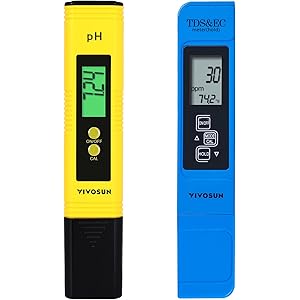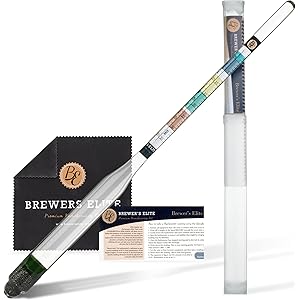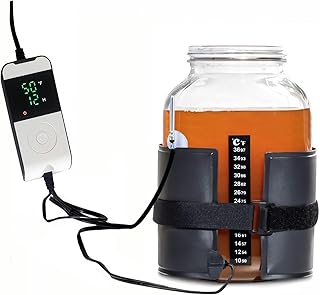The Ultimate Guide to Kombucha Second Fermentation with Juice: Techniques, Recipes, and Tips
Kombucha, the fizzy fermented tea, has gained immense popularity over the years due to its unique flavor, health benefits, and potential probiotic properties. One of the most exciting aspects of brewing kombucha at home is the second fermentation process, where flavors can be intensified and carbonation levels can be enhanced. Adding juice during this stage not only adds sweetness and flavor but also allows for a myriad of creative combinations. This comprehensive guide will cover everything you need to know about kombucha second fermentation with juice, including techniques, recipes, and tips to perfect your brew.
Understanding Kombucha and Its Fermentation Process
What is Kombucha?
Kombucha is a beverage created by fermenting sweetened tea using a symbiotic culture of bacteria and yeast (SCOBY). The fermentation process transforms the sugars in the tea into alcohol, acids, and carbon dioxide, giving kombucha its characteristic tangy flavor and effervescence.
The Fermentation Stages
- Primary Fermentation: This stage typically lasts between 7 to 14 days. During this time, the SCOBY consumes the sugar in the sweetened tea, producing acetic acid, gluconic acid, and carbon dioxide. The result is a tangy drink that can be enjoyed as is, but many choose to take it a step further with a second fermentation.
- Second Fermentation: This is where the magic happens. By bottling the kombucha with added flavorings—such as fruit juice, spices, or herbs—brewers can enhance the drink’s flavor and increase carbonation. This phase usually lasts from 3 to 7 days, depending on the desired flavor profile and fizziness.
Why Use Juice in Second Fermentation?
Adding juice during the second fermentation of kombucha serves multiple purposes:
- Flavor Enhancement: Juice provides a natural sweetness and complements the tangy profile of kombucha, resulting in a balanced and delicious drink.
- Increased Carbonation: The sugars in the juice will continue to ferment, producing carbon dioxide and increasing the fizziness of the final product.
- Nutritional Benefits: Depending on the type of juice used, you can introduce vitamins, antioxidants, and additional health benefits to your kombucha.
- Creative Combinations: The possibilities for flavor combinations are virtually endless. From citrusy blends to berry-infused delights, using juice allows for experimentation and customization.
Choosing the Right Juice
When selecting juice for your second fermentation, consider the following:
- Natural and Fresh: Opt for fresh-pressed, 100% juice without added sugars or preservatives. Store-bought juices can contain additives that may alter fermentation.
- Flavor Profiles: Think about how the juice will complement the existing flavors of your kombucha. For example, tart juices like cranberry work well with sweeter kombucha, while citrus juices can enhance tanginess.
- Seasonality: Use seasonal fruits to create unique flavors that reflect the time of year. Fresh fruit juice not only tastes better but also has a more vibrant flavor.
Basic Equipment Needed
Before you start experimenting with second fermentation using juice, ensure you have the following equipment:
- Clean Glass Bottles: Flip-top bottles or any airtight glass containers work best for second fermentation. They help to retain carbonation and maintain flavor.
- Funnel: A funnel is essential for pouring juice and kombucha without spilling.
- Measuring Cup: To measure juice accurately.
- Fine Mesh Strainer: This is optional, but useful if you prefer a clear kombucha without pulp.
- Labels: Consider labeling your bottles with the flavor and date of fermentation to track your brewing process.
Basic Second Fermentation Steps
- Prepare Your Kombucha: After the primary fermentation, remove the SCOBY and set it aside in a clean bowl with some kombucha to keep it safe.
- Add Juice: In each clean bottle, add your chosen juice. A typical ratio is about 1/4 to 1/2 cup of juice per 16 ounces of kombucha, but you can adjust based on your taste preference.
- Bottle the Kombucha: Pour the kombucha into the bottles, leaving about an inch of headspace at the top to allow for carbonation.
- Seal and Ferment: Seal the bottles tightly and let them sit at room temperature, away from direct sunlight, for 3 to 7 days. The duration depends on the desired level of carbonation and flavor.
- Taste Test: Check the flavor and carbonation daily. Once you reach your desired taste, refrigerate the bottles to slow fermentation.
- Serve: Pour the flavored kombucha over ice, garnish with fresh fruit or herbs, and enjoy!
Flavorful Kombucha Second Fermentation Juice Recipes
1. Tropical Paradise Kombucha
Ingredients:
- 1/2 cup pineapple juice (fresh or 100% juice)
- 1/4 cup coconut water
Instructions:
- Prepare the bottles by adding the pineapple juice and coconut water.
- Fill the bottles with kombucha, leaving an inch of headspace.
- Seal tightly and let ferment for 4 to 6 days.
- Taste regularly. Refrigerate when satisfied with the flavor.
2. Berry Medley Kombucha
Ingredients:
- 1/4 cup strawberry juice (fresh or 100%)
- 1/4 cup raspberry juice (fresh or 100%)
Instructions:
- In each bottle, add the strawberry and raspberry juice.
- Fill with kombucha, leaving space at the top.
- Seal and ferment for 3 to 5 days.
- Taste daily. Once ready, refrigerate and enjoy!
3. Citrus Burst Kombucha
Ingredients:
- 1/4 cup orange juice (freshly squeezed)
- 1/4 cup lemon juice (freshly squeezed)
Instructions:
- Combine the orange and lemon juice in the bottle.
- Add kombucha, leaving space at the top.
- Seal the bottle and let it ferment for 4 to 7 days.
- Taste for sweetness and fizziness before refrigerating.
4. Spicy Ginger Lime Kombucha
Ingredients:
- 1/4 cup fresh lime juice
- 1 tablespoon grated ginger
- 1 tablespoon honey (optional)
Instructions:
- Add lime juice and grated ginger to the bottle.
- Pour in kombucha and honey if desired.
- Seal and let ferment for 3 to 5 days.
- Refrigerate once you reach the desired taste.
5. Apple Cinnamon Delight Kombucha
Ingredients:
- 1/2 cup apple juice (fresh or 100%)
- 1/2 teaspoon ground cinnamon
Instructions:
- In the bottle, mix apple juice and cinnamon.
- Fill with kombucha and leave space at the top.
- Seal tightly and let ferment for 4 to 6 days.
- Taste regularly and refrigerate when ready.
6. Pomegranate Mint Kombucha
Ingredients:
- 1/2 cup pomegranate juice (fresh or 100%)
- A handful of fresh mint leaves
Instructions:
- Add pomegranate juice and mint leaves to the bottle.
- Pour in kombucha, leaving headspace.
- Seal and ferment for 3 to 5 days.
- Once desired flavor is achieved, refrigerate and enjoy!
7. Cherry Limeade Kombucha
Ingredients:
- 1/2 cup cherry juice (fresh or 100%)
- 1/4 cup lime juice (freshly squeezed)
Instructions:
- In a clean bottle, combine cherry juice and lime juice.
- Fill with kombucha and seal tightly.
- Let it ferment for 4 to 7 days, tasting regularly.
- Refrigerate and serve chilled.
8. Herbal Berry Kombucha
Ingredients:
- 1/4 cup blueberry juice (fresh or 100%)
- 1/4 cup hibiscus tea (cooled)
Instructions:
- In a clean bottle, mix blueberry juice with cooled hibiscus tea.
- Pour in kombucha, leaving an inch of space at the top.
- Seal and ferment for 3 to 5 days.
- Once you reach the desired taste, refrigerate and enjoy.
Tips for a Successful Second Fermentation
- Experiment with Ratios: Start with a smaller amount of juice and adjust based on your taste preferences. You can always add more juice next time.
- Monitor Temperature: Keep your kombucha in a warm area, ideally around 70-85°F (21-29°C), to encourage fermentation. Cooler temperatures can slow the process.
- Burp Your Bottles: To prevent excessive pressure build-up, “burp” your bottles by slightly loosening the caps daily. This helps release excess carbon dioxide.
- Sanitize Everything: Clean your bottles and equipment thoroughly to prevent contamination. Even a small amount of residue can alter the taste and fermentation process.
- Use Whole Fruits for Extra Flavor: Consider adding slices of fresh fruits or herbs along with juice to your bottles for additional flavor complexity.
Troubleshooting Common Issues
1. Flat Kombucha
If your kombucha lacks fizz, it could be due to insufficient fermentation time or not enough sugar from the juice. Try fermenting longer or increasing the juice ratio next time.
2. Overly Sweet Kombucha
If your kombucha tastes too sweet, it may need more fermentation time. Additionally, consider reducing the amount of juice in future batches.
3. Off Flavors
Off flavors can arise from spoiled ingredients or unclean equipment. Always ensure your ingredients and bottles are fresh and sanitized.
4. Over-Carbonation
If your kombucha becomes overly fizzy, it can lead to bottle explosions. Check the pressure regularly and refrigerate once you reach the desired carbonation level.
Second fermentation with juice is a fantastic way to enhance the flavor and enjoyment of your homemade kombucha. With endless flavor possibilities and the ability to experiment, each batch can be uniquely your own. By following the steps, recipes, and tips outlined in this guide, you’ll be well on your way to mastering the art of kombucha second fermentation. Enjoy your brewing journey, and cheers to delicious, effervescent kombucha!
Brewer's Elite Hydrometer - for Home Brew Beer, Wine, Mead and Kombucha - Deluxe Triple Scale Set, Hardcase and Cloth - Specific Gravity ABV Tester
$12.99 (as of 02/10/2025 15:41 GMT -03:00 - More infoProduct prices and availability are accurate as of the date/time indicated and are subject to change. Any price and availability information displayed on [relevant Amazon Site(s), as applicable] at the time of purchase will apply to the purchase of this product.)
Receive tips, news and exclusive offers! Sign up for our newsletter now!











